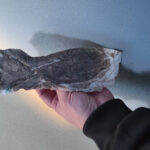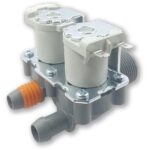Protecting the Solar Water Heater in Summer
The solar water heater is extremely efficient during the summer, but many people wonder whether it should be covered to avoid overheating or damage. The cover can help protect it from overheating, especially if you don’t often use hot water. It also shields it from weather conditions and extends its lifespan. However, in areas with mild temperatures or when hot water is frequently consumed, covering may not be necessary.

More specifically, especially during summer but not only*, the water temperature in the solar tank can reach and exceed 100 degrees Celsius. This is proven by the maximum temperature recorded by the LIVE DATA LOGGER, which is: 100.31. Although the safety valve can release pressure and prevent immediate problems, allowing water over 90 degrees Celsius to enter your building’s plumbing system can cause damage unrelated to the solar water heater itself.
Practical tip: If you know you will be away for a long period during the summer months and hot water cannot be consumed, it’s a good idea to place a solar heater cover to significantly reduce the risk of problems while you’re away.
There may also be another reason to cover the solar water heater, again for protection — weather conditions, specifically hail. Many people have experienced the disappointment of a broken solar collector. Although this damage can usually be repaired, it requires considerable labor and materials. All companies claim that the collector glass is very durable — and it is — but many examples of hail damage prove there are exceptions. One of them happened to my own solar water heater.
Before deciding to cover your solar water heater, make sure you’ve studied your local climate and your hot water needs. Shading or certain special covers can help maintain the system’s proper function without damage. Even for such a simple action, consult your technician or installer for any special instructions, since the way the cover is placed may vary depending on whether your solar system has 1 or 2 collectors, etc.
* And yet it happened: During the winter, very low temperatures can freeze the external pipes of the solar system, making water use impossible. If at the same time there is intense sunshine (regardless of the cold), and the water is not used, it may reach “alert” levels even in winter. This has happened before, and the ONLINE SOLAR WATER HEATER THERMOMETER has recorded it.
- Improvements in the Placement of the Data Logger - 29 January 2025
- Solar Water Heater Statistics – December 2024 - 10 January 2025
- Washing machines with dual water supply - 24 December 2024











